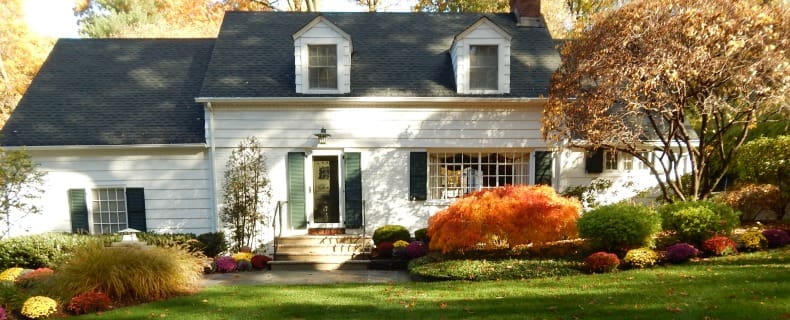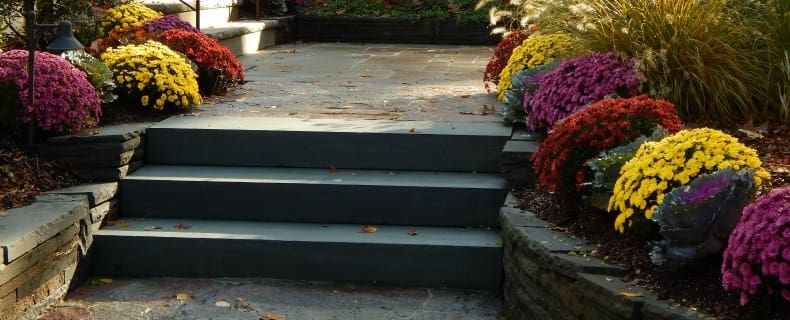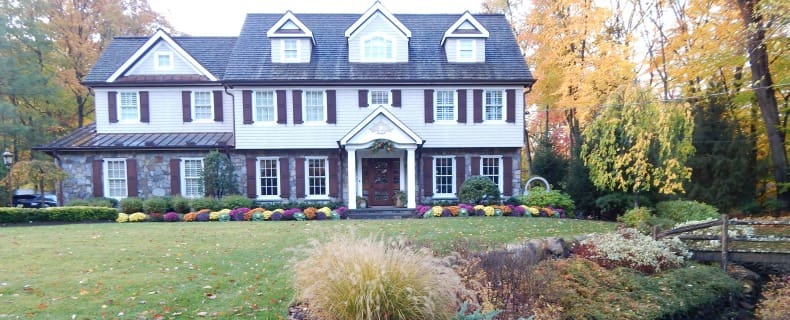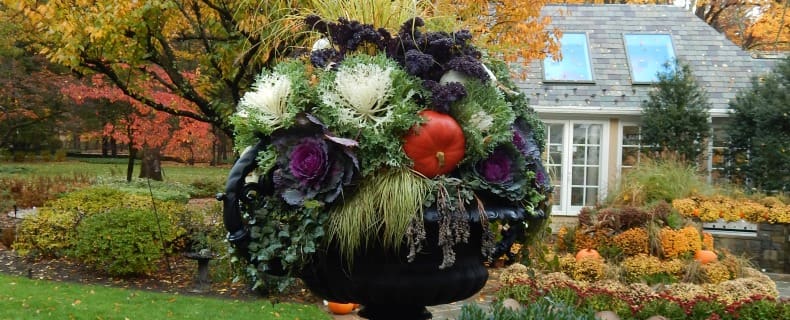Planting Perennial Flowers in NJ in the Fall
Planting perennials in the fall will ensure a landscape that’s filled with year-round greenery and color. During the fall, sunlight is less intense, the soil is cooler, the air is moister and weed growth slows down, so it’s a great time to plant perennials.
Even if your perennials don’t bloom right away, fall planting will give your perennials a head start for strong root growth and colorful blooms next season.
 Perennials Flowers in NJ
Perennials Flowers in NJ
Perennials are the backbone of most flower gardens because they come back year after year. Unlike annuals that must be replanted each year, hardy perennials die at the end of their growing season, then re-grow from the same roots the following year.
Perennial flowers are hardy, dependable performers. They are easy to care for and provide a wide variety of shapes, textures, and colors in any landscape. Planting perennials in the fall can add wonderful color to garden beds, containers, window boxes, and areas around shrubs and trees. When combined with annuals and bulbs that bloom at different times during the year, you can create year-round color.
The lifespan and bloom time of perennials can vary greatly depending on the plant species, so it’s important to check the lifespan and bloom time of perennials before you plant them. Perennials can last for several years, many years, or a lifetime.
Short-Lived Perennial Flowers in NJ
“Short-lived” perennials have a lifespan of just three to four years. Although they don’t last too long, they bloom profusely the first year you plant them. By dividing short-lived perennials, or taking cuttings every two years, you can prolong their lifespan.
Popular short-lived perennials include:
- Blanket flower
- Cardinal flower
- Coral bells
- Delphinium
- English daisy
- Iceland poppy
- Lupine
- Shasta daisy
Long-Lived Perennial Flowers in NJ
“Long-lived” perennials have an average lifespan of up to 15 years, and some varieties may last even longer. It may take them a couple of years to bloom after you plant them, but you can count on hardy, dependable plants year after year in your landscape.
Popular long-lived perennials include:
- Astilbe
- Butterfly weed
- Coneflower
- Daylily
- Hosta
- Hellebore
- Iris
- Monkshood
If you’re looking for a hardy, long-lived perennial when planting perennials in the fall, peonies have been known to bloom for up to 50 years with vibrant color and beautiful blooms every season.
 Choosing Perennial Flowers in NJ
Choosing Perennial Flowers in NJ
When planting perennials in the fall, it’s important to consider your planting locations, the shapes of your plants, how plants are arranged, and plant colors.
Creating a beautiful perennial garden or landscape area depends on these important factors:
Planting Zones
The USDA divides the United States into hardiness planting zones. The latest USDA plant hardiness map considers climate and weather conditions, average daily temperatures, and the average amount of days of sunlight, rainfall, snow, and ice. It also takes into consideration the closeness to a large body of water, elevation, and the urban heat effect.
Bergen County falls in hardiness Zone 6. Planting and growing in these zones usually runs from mid-March (after the last frost) through mid-November.
When selecting perennial plants for your Bergen County landscape, choose plants that are zoned in the seasonal planting guide for Zone 6, otherwise, they may not survive the winter season.
Planting Locations
Perennials, like all plants, will stay healthier and live longer if they’re planted in a location that suits their growth patterns. When planting perennials in the fall, take note of plant growth and care requirements that are typically shown on plant labels.
You should consider the type of soil your planting in, sun and shade requirements, and irrigation needs. If labels don’t give you enough information, or you’re not sure of your existing landscape conditions, consult a Bergen County landscape company, like Borst Landscape & Design who can help you choose the right perennials for your home.
 Planting Perennial Flowers in Fall
Planting Perennial Flowers in Fall
There’s such a wide variety of perennials to choose from. They all have different growing seasons, planting requirements, and maintenance needs.
Shade-loving perennials, like astilbe, coral bells, and primrose, need deep humusy soil, while sun-loving perennials, like coneflower, daylily, and delphinium, need a dryer, well-drained soil. Some perennials grow in nice, neat mounds or clusters, while others will take over your entire garden.
Perennials often increase in size each year, so you may need to divide them and transplant them in different areas of your landscape to keep them at a reasonable size.
When planting perennials in the fall, you can combine spring-blooming perennials with fall-blooming perennials to give your landscape more foliage, texture, and color throughout the year.
When planting perennial garden areas, they look best when combined with trees, shrubs, and woody plants that provide height, depth, and contrasting texture.
Perennial garden beds can also contain annuals and biennials for splashes of color throughout the season. Bulbs will add early spring color, while ornamental grasses will provide late-season color and interesting textures.
When planting your perennial flowers, consider these important tips
- Height – Place the tallest plants at the back of the planting areas, then work down in height towards the front. Remember that many plants hold their flowers well above the foliage. This means that when the plant no longer in bloom, it may be much shorter than the specified height.
- Width – A plant’s width, or spread, is just as important as its height. Be careful about locating slow-growing perennials close to other plants that spread rapidly, or vice versa. The slow grower may get covered up by the end of the first growing season.
- Spacing – Plant thickly, but don’t overcrowd. Place short-lived perennials between slower-growing, long-lived perennials. Peonies typically spread up to three feet wide, but it may take five to seven years for them to reach that size. While you’re waiting, you can fill in spaces with short-lived perennials.
- Color – When arranging colors, aim for a good balance of hues and contrast. Too much of one color can be boring, while too many colors can be overwhelming. You may prefer cool, pastel colors or hot, vibrant colors, or a combination of the two. Remember, many perennials only bloom a couple of weeks each season, then they remain green for the rest of the year.
When purchasing and planting perennials in the fall, remember that plants will go dormant during the winter, but they will develop strong, stable root systems underground. Larger, more mature plants will fill in faster during the next blooming season.
 Perennial Garden Ideas for Fall
Perennial Garden Ideas for Fall
Garden Borders
Garden borders are typically long, rectangular flower beds that are two to four feet deep and viewed only from one side. They are often located in front of a foliage backdrop, fence or retaining wall, so growth is easier to contain.
Most garden borders today range from three feet deep to 12 or 15 feet long. When designing a perennial garden border, repeating themes of plants and colors will be more appealing.
Garden Islands
Garden island beds typically float in the lawn or landscape. Shapes are irregular, usually with gentle curves and no sharp corners or edges.
Island beds are meant to be viewed from all sides, so plants must be positioned carefully when planting perennials in the fall. The tallest plants should be planted along the centerline of the island bed with shorter plants around the edges.
Garden island beds look best when they are generous in size, typically 8-feet by 15-feet wide. The tallest plants should be a maximum height of five feet.
Shade Gardens
Shade gardens work well for Bergen County landscapes that get mostly shade all year. Shade gardens follow the natural shade patterns of the trees in the landscape, so they are often irregularly shaped.
There’s a variety of shade-loving plants to choose from when planting perennials in the fall, but make sure you plant in deep, humusy soil to keep your perennials moist year-round.
Free-Form Gardens
If you have an English, transitional or modern style home, you may enjoy a large, free-form perennial garden. Free-form gardens are often defined by a series of meandering pathways that lead the viewer right into or through trees, shrubs, plants, and flowers. Perennial flowers are often mixed in among other shrubs and plants or planted in pots or containers along pathways.
Whatever the style of your home or the type of garden you prefer, the garden designers at Borst can help you with planting perennials in the fall that will add year-round color and beauty to your landscape.
Fall is a great time to plant flowers! Fall blooming perennial flowers are a great addition to any garden in NJ. We hope the tips shared in this article will help you create a garden with beautiful fall-blooming perennial flowers. For advice about perennial flowers in Bergen County, NJ, contact the experienced landscape designers at Borst Landscape and Design. Contact us at (201) 785-9400.

 Choosing Perennial Flowers in NJ
Choosing Perennial Flowers in NJ Planting Perennial Flowers in Fall
Planting Perennial Flowers in Fall Perennial Garden Ideas for Fall
Perennial Garden Ideas for Fall